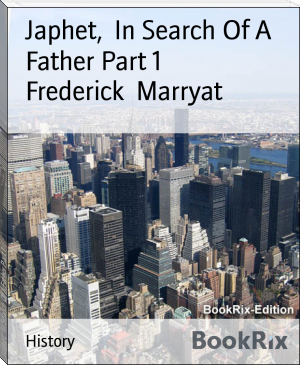The Origin of the Family Private Property and the State by Frederick Engels (classic novels .txt) 📕

- Author: Frederick Engels
- Performer: -
Book online «The Origin of the Family Private Property and the State by Frederick Engels (classic novels .txt) 📕». Author Frederick Engels
The new constitution, attributed to rex Servius Tullius and following the Grecian model, more especially that of Solon, created a new public assembly including or excluding all the members of populus and plebs according to whether they rendered military service or not. The whole population, subject to enlistment, was divided into six classes according to wealth. The lowest limitis in the five highest classes were: I., 100,000 ass; II., 75,000; III., 50,000; IV., 25,000; V., 11,000; which according to Dureau de la Malle is equal to about $3,155, $2,333, $1,555, $800, and $388. The sixth class, the proletarians, consisted of those who possessed less and were exempt from military service and taxes. In this new assembly of centuriae (comitia centuriata) the citizens formed ranks after the manner of soldiers, in companies of one hundred (centuria), and every centuria had one vote. Now the first class placed 80 centuriae in the field; the second 22, the third 20, the fourth 22, the fifth 30 and the sixth, for propriety's sake, one. To this were added 18 centuriae of horsemen composed of the most wealthy. Hence, there were 193 centuriae, giving a lowest majority vote of 97. Now the horsemen and the first class alone had together 98 votes. Being in the majority, they had only to agree, and they could pass any resolution without asking the consent of the other classes.
This new assembly of centuriae assumed all the political rights of the former assembly of curiae, a few nominal privileges excepted. The curiae and the gentes composing them now were degraded to mere private and religious congregations, analogous to their Attic prototypes, and as such they vegetated on for a long time. But the assembly of curiae soon became obsolete. In order to drive also the three old tribes out of existence, a system of four local tribes was introduced. Every tribe was assigned to one quarter of the city and received certain political rights.
Thus the old social order of blood kinship was destroyed also in Rome even before the abolition of the so-called royalty. A new constitution, founded on territorial division and difference of wealth took its place and virtually created the state. The public power of coërcion consisted here of citizens liable to military duty, to be used against the slaves and the so-called proletarians who were excluded from military service and general armament.
After the expulsion of the last rex, Tarquinius Superbus, who had really usurped royal power, the new constitution was further improved by the institution of two military leaders (consuls) with equal powers, analogous to the custom of the Iroquois. The whole history of the Roman republic moves inside of this constitution: the struggles between patricians and plebs for admission to office and participation in the allotment of state lands, the merging of the patrician nobility in the new class of large property and money owners; the gradual absorption by the latter of all the land of the small holders who had been ruined by military service; the cultivation of these enormous new tracts by slaves; the resulting depopulation of Italy which not only opened the doors to the imperial tyrants, but also to their successors, the German barbarians.
[25] Translator's note.
The term caput received the meaning of legal right of a person from the legal status of the head of a family.... Legal science extended the meaning of the term so that it related not alone to slaves, but also to minors and women. This legal right, so conceived, could be curtailed in three ways: Capitis deminutio maxima was the loss of the status libertatis (personal liberty), which included the loss of the status civitatis and familiae (civil and family rights); the capitis deminutio minor or media was the loss of the status civitatis (civil rights), including the loss of the status familiae (family rights); the capitis deminutio minima was the loss of the status familiae (family rights). Lange, Römische Alterthümer, Berlin, 1876, Vol. I., p. 204.
[26] Author's note.
The Latin rex is equivalent to the Celtic-Irish righ (tribal chief) and the Gothic reiks. That this, like the German Fürst, English first and Danish forste, originally signified gentile or tribal chief is evident from the fact that the Goths in the fourth century already had a special term for the king of later times, the military chief of a whole nation, viz., thiudans. In Ulfila's translation of the Bible Artaxerxes and Herod are never called reiks, but thiudans, and the empire of the emperor Tiberius not reiki, but thiudinassus. In the name of the Gothic thiudans, or king as we inaccurately translate, Thiudareiks (Theodoric, German Dietrich), both names flow together.
CHAPTER VII. THE GENS AMONG CELTS AND GERMANS.Space forbids a consideration of the gentile institutions found in a more or less pure form among the savage and barbarian races of the present day; or of the traces of such institutions, discovered in the ancient history of civilized nations in Asia. One or the other are met everywhere. A few illustrations may suffice: Even before the gens had been recognized, it was pointed out and accurately described in its main outlines by the man who took the greatest pains to misunderstand it, McLennan, who wrote of this institution among the Kalmucks, the Circassians, the Samoyeds and three Indian nations: the Warals, the Magars and the Munnipurs. Recently it was described by M. Kovalevsky, who discovered it among the Pshavs, Shevsurs, Svanets and other Caucasian tribes. A few short notes about the existence of the gens among Celts and Germans may find a place here.
The oldest Celtic laws preserved for us still show the gens in full bloom. In Ireland, it is alive in the popular instinct to this day, after it has been forced out of actual existence by the English. It was in full force in Scotland until the middle of the eighteenth century, and here it also succumbed only to the weapons, laws and courts of the English.
The old Welsh laws, written several centuries before the English invasion, not later than the 11th century, still show collective agriculture of whole villages, although only exceptionally and as the survival of a former universal custom. Every family had five acres for its special use; another lot was at the same time cultivated collectively and its yield divided among the different families. In view of Irish and Scotch analogies it cannot be doubted that these village communities represent gentes or subdivisions of gentes, even though a repeated investigation of the Welsh laws, which I cannot undertake from lack of time (my notes are from 1869), should not directly corroborate this. One thing, however, is plainly proven by the Welsh and Irish laws, namely that the pairing family had not yet given way to monogamy among the Celts of the 11th century. In Wales, marriage did not become indissoluble by divorce, or rather by notification, until after seven years. Even if no more than three nights were lacking to make up the seven years, a married couple could still separate. Their property was divided among them: the woman made the division, the man selected his share. The furniture was divided according to certain very funny rules. If the marriage was dissolved by the man, he had to return the woman's dowry and a few other articles; if the woman wished a separation, then she received less. Of three children the man took two, the woman one, viz., the second child. If the woman married again after her divorce, and her first husband claimed her back, she was obliged to follow him, even if she had one foot in her new husband's bed. But if two had lived together for seven years, they were considered man and wife, even without the preliminaries of a formal marriage. Chasteness of the girls before marriage was by no means strictly observed, nor was it required. The regulations regarding this subject are of an extremely frivolous nature and in contradiction with civilized morals. When a woman committed adultery, her husband had a right to beat her—this was one of three cases when he could do so without incurring a penalty—but after that he could not demand any other satisfaction, for "the same crime shall either be atoned for or avenged, but not both." The reasons that entitled a woman to a divorce without curtailing her claims to a fair settlement were of a very diverse nature: bad breath of the man was sufficient. The ransom to be paid to the chief or king for the right of the first night (gobr merch, hence the medieval name marcheta, French marquette) plays a conspicuous part in the code of laws. The women had the right to vote in the public meetings. Add to this that similar conditions are vouched for in Ireland; that marriage on time was also quite the custom there, and that the women were assured of liberal and well defined privileges in case of divorce, even to the point of remuneration for domestic services; that a "first wife" existed by the side of others, and that legal and illegal children without distinction received a share of their deceased parent's property—and we have a picture of the pairing family among the Celts. The marriage laws of the American Indians seem strict in comparison to the Celtic, but this is not surprising when we remember that the Celts were still living in group marriage at Cesar's time.
The Irish gens (Sept; the tribe was called clainne, clan) is confirmed and described not alone by the ancient law codes, but also by the English jurists of the 17th century who were sent across for the purpose of transforming the clan lands into royal dominions. Up to this time, the soil had been the collective property of the gens or the clan, except where the chiefs had already claimed it as their private dominion. When a gentile died, and a household was thus dissolved, the gentile chief (called caput cognationis by the English jurists) made a new assignment of the whole gentile territory to the rest of the household. This division of land probably took place according to such rules as were observed in Germany. Until about fifty years ago, village marks were quite frequent, and some of these so-called rundales may be found to this day. The farmers of a rundale, individual tenants on the soil that once was the collective property of the gens, but had been confiscated by the English conquerors, each pay the rent for his respective parcel. But they all combine their lands and parcel it off according to situation and quality. These parcels, called "Gewanne" on the German river Mosel, are cultivated collectively and their yield is divided into shares. Marshland and pastures are used in common. Fifty years ago, new divisions were still made occasionally, sometimes annually. The field map of such a rundale village looks exactly like that of a German "Gehöferschaft" (farming commune) on the Mosel or in the Hochwald. The gens also survives in the "factions." The Irish farmers often form parties that seem to be founded on absolutely contradictory or senseless distinctions, quite incomprehensible to Englishmen. The only purpose of these factions is apparently to rally for the popular sport of hammering the life out of one another. They are artificial reincarnations, modern substitutes for the dispersed gentes that demonstrate the continuation of the old gentile instinct in their own peculiar manner. By the way, in some localities the gentiles are still living together on what is practically their old territory. During the thirties, for instance, the great majority of the inhabitants of the old county of Monaghan had only four family names, i. e., they were descended from four





Comments (0)